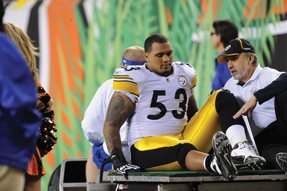Published in ACP Internist
Working for a professional sports team can be similar to a traditional office-based practice. Internists who hold these jobs handle chronic conditions and acute injuries, convey difficult medical concepts to their patients, coordinate care among subspecialists, and sometimes deliver bad news.
But when they’re working the sidelines of a game or a match, every decision puts millions of dollars in revenue, contracts and endorsements on the line. Tens of thousands of screaming fans offer their clinical opinions, or even worse, their non-clinical ones, while the internist is trying to assess the patient.
And don’t forget the athletes themselves, highly trained, physically exceptional and extremely competitive people who are driven to get back on the field, even if it’s not always in their best interests.
Unusual career arc
Sports medicine isn’t the typical internal medicine career. Most sports medicine fellowships go to family physicians, and sometimes internists aren’t even considered for them, said Selina Shah, MD, an ACP Fellow who practices at the Center for Sports Medicine in San Francisco and Walnut Creek, Calif. She chairs an internal medicine interest group that addresses this and other issues within the American Medical Society for Sports Medicine. The society has just over 2,000 members, three-quarters trained in family practice and fewer than one in 10 trained in internal medicine. Another group, the American College of Sports Medicine, reports that about 2% of its members identified themselves as internal medicine specialists.
Family medicine does a little of everything, Dr. Shah said, and already has a focus on musculoskeletal medicine, as well as on athletes of all ages. Also, the society’s founding members 20 years ago were all trained in family practice. When internists choose sports medicine, it’s usually because they’re jocks, she said.
Dr. Shah’s sport is dance, which she has done recreationally and professionally since she was three years old. Following her internal medicine residency at Vanderbilt University in Nashville, Tenn., a sports medicine fellowship at Kaiser Permanente Southern California, Los Angeles, led her to a career treating not only pro athletes but Olympic figure skaters, weight lifters and gymnasts. She continued her involvement in dance by volunteering her medical services for professional dance companies across the San Francisco Bay area. …

